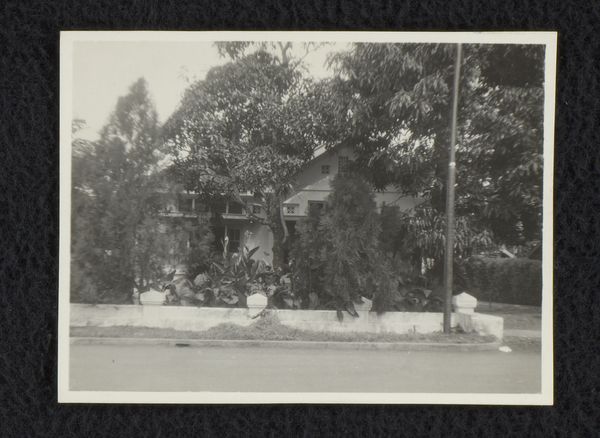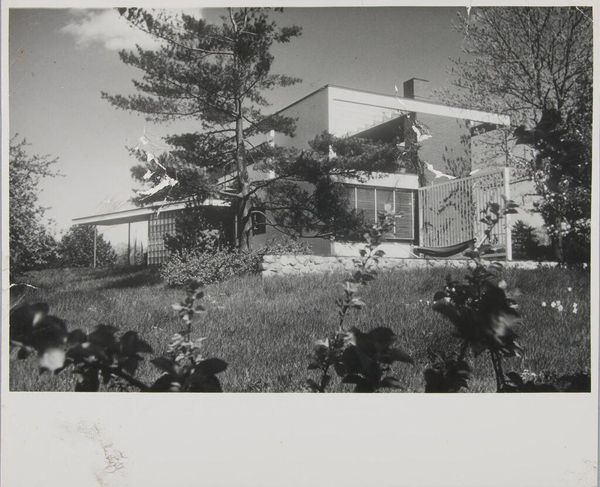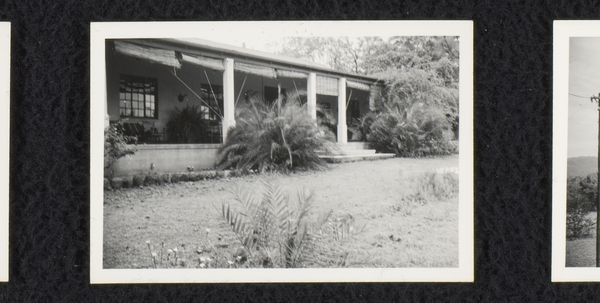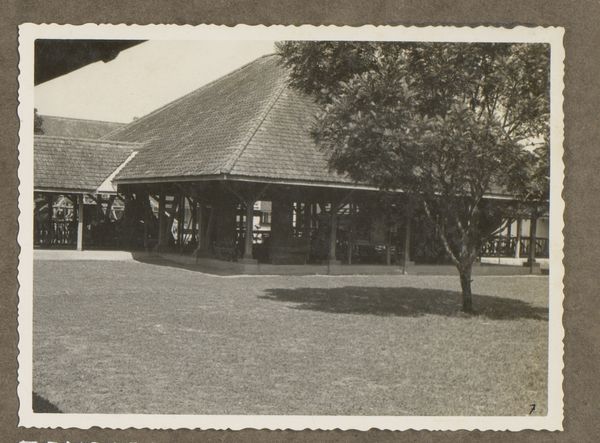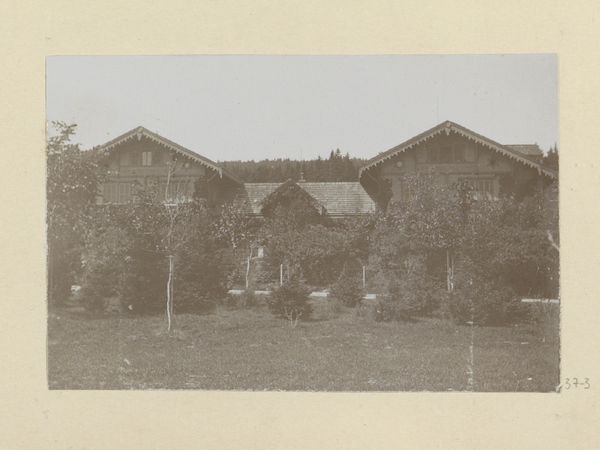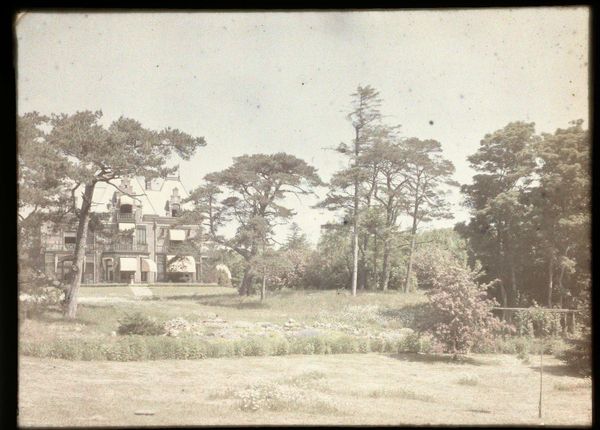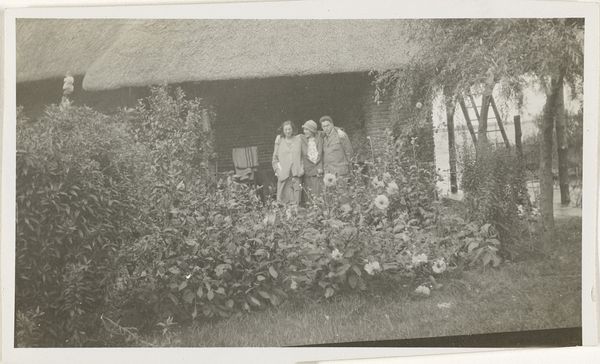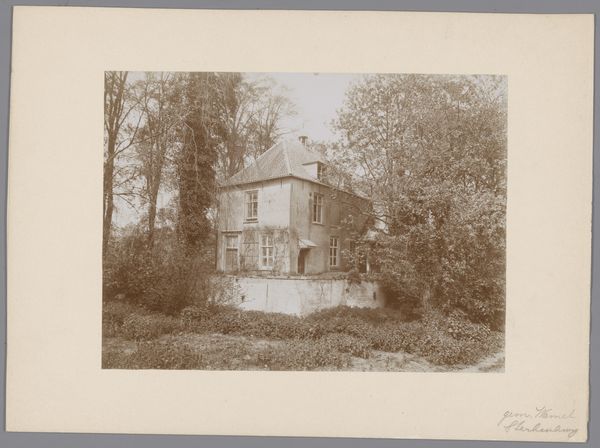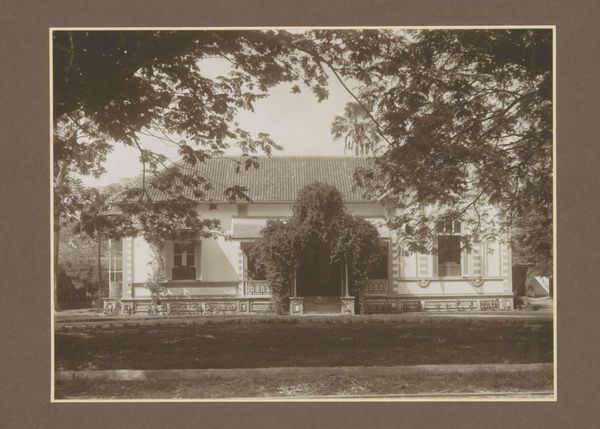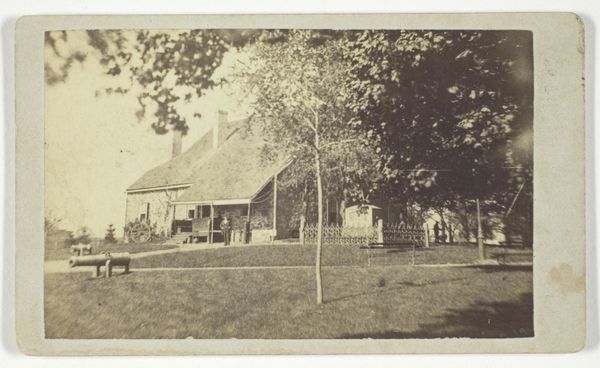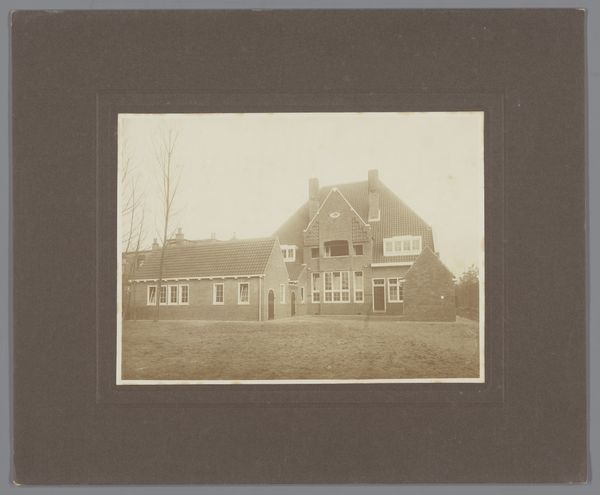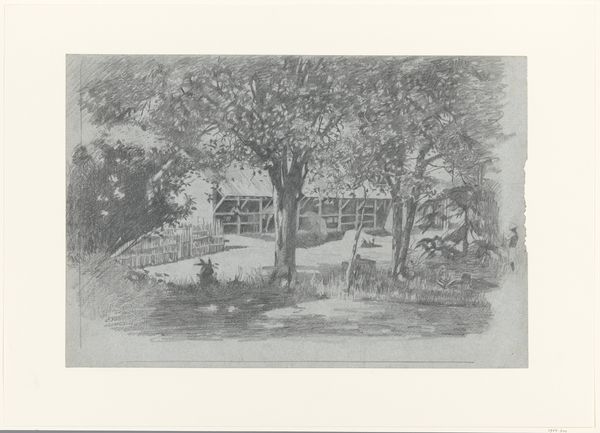
Woonhuis van Willem van den Berg in Shewasaulu, Zuid-Afrika 1967 - 1971
0:00
0:00
photography, site-specific, architecture
#
landscape
#
photography
#
site-specific
#
architecture
Dimensions: height 60 mm, width 85 mm
Copyright: Rijks Museum: Open Domain
Curator: Here we have a photographic study of architecture and place. This image captures "Woonhuis van Willem van den Berg in Shewasaulu, Zuid-Afrika," dating from 1967 to 1971, by Willem Jacob van den Berg. Editor: Wow, it feels almost… overgrown? There's something really evocative about how the building is almost being swallowed up by the landscape. It makes you wonder about time, memory, and the human relationship with nature. Curator: Exactly! Consider that architecture is never just about physical structures. It's always implicated in complex socio-political dynamics, race, class and the environment. Here, one could interpret the embrace of nature as perhaps, a reflection of a shifting cultural paradigm. Editor: That’s interesting! I can't help thinking of it on a purely visceral level though. All those tangled vines crawling over everything make me feel almost claustrophobic. But in a beautiful way! Like a secret hideaway. Curator: Consider how van den Berg uses photography. It’s site-specific – intimately documenting a unique home in a specific socio-geographic context. This is, itself, a deliberate statement. What do the ideas around photography bring into the picture, how about portraiture versus architecture in the political sphere. Editor: True. You start thinking about how that "swallowing" isn't just nature reclaiming the house, but perhaps, in a post-colonial lens, South Africa being reclaimed by its roots? This also leads into thinking about belonging and non-belonging. This photograph is so multi-layered and deeply beautiful in its ambiguity. It asks more questions than it answers! Curator: I agree. It’s this very tension that allows it to resonate so profoundly. The photograph presents multiple interpretations that prompt an ongoing examination of the intersections between history, identity, and space. Editor: What a powerful reminder that architecture can become poetry, photography philosophy, and our everyday landscape a deep conversation. Thank you for this amazing perspective! Curator: Likewise, reflecting on your more sensory impressions has also changed the way I think about it. It reveals so many different angles from which one could discuss such a layered work!
Comments
No comments
Be the first to comment and join the conversation on the ultimate creative platform.
